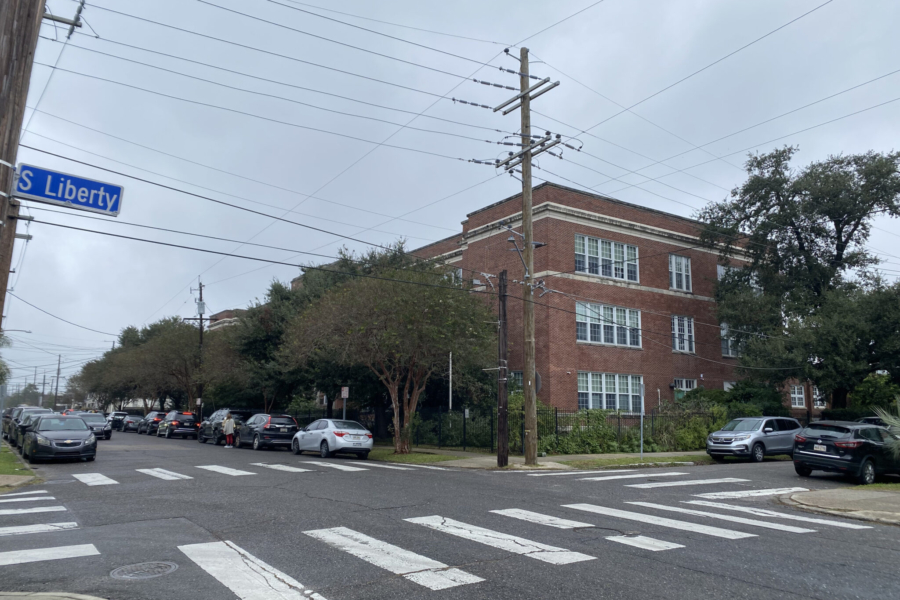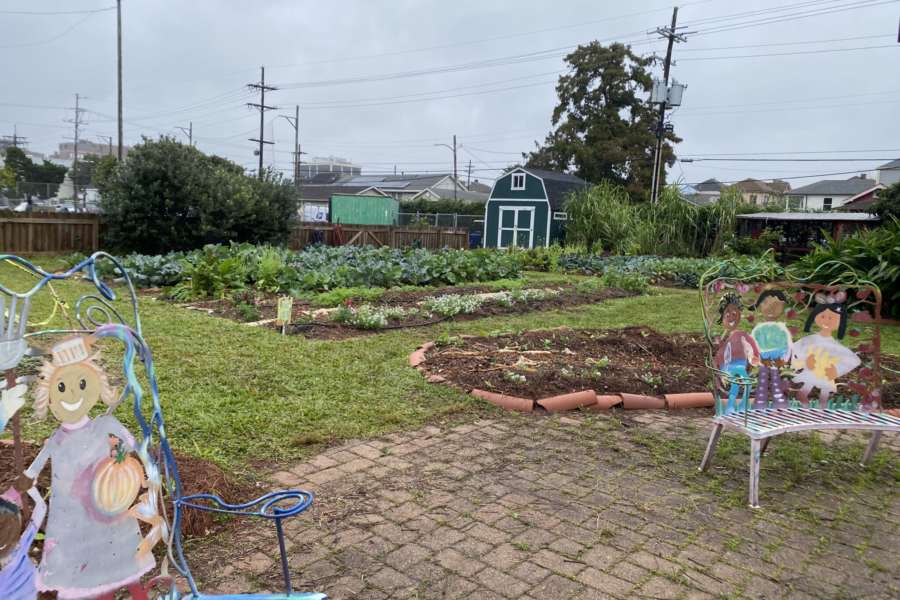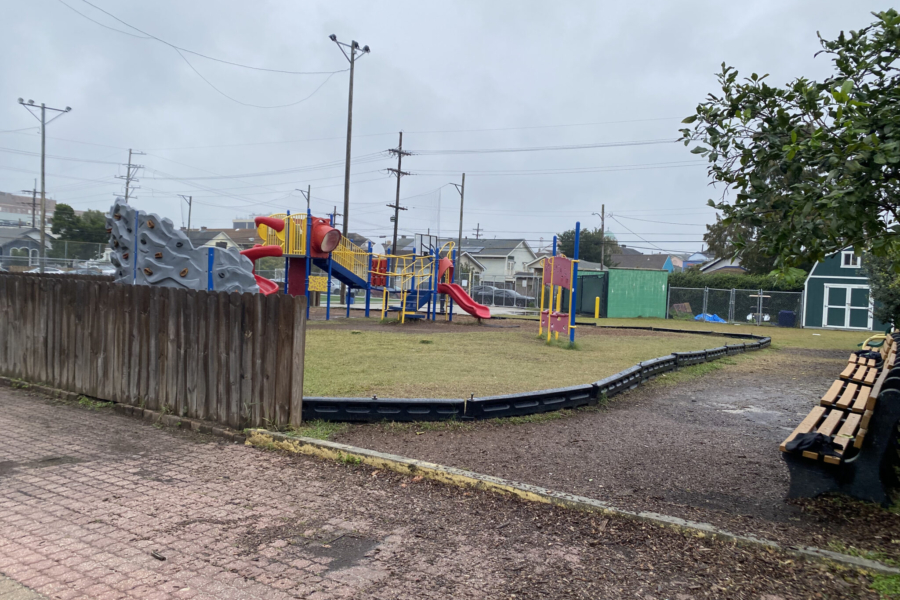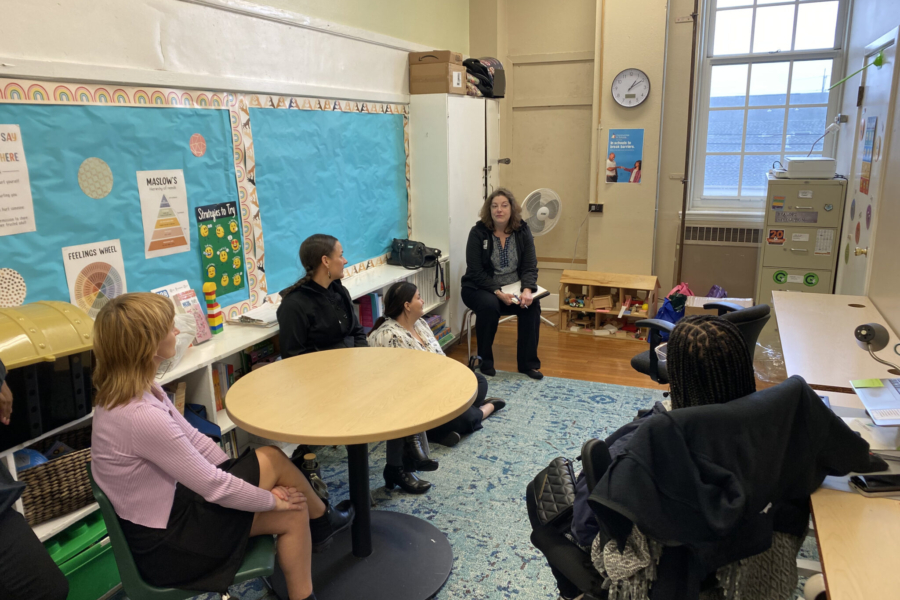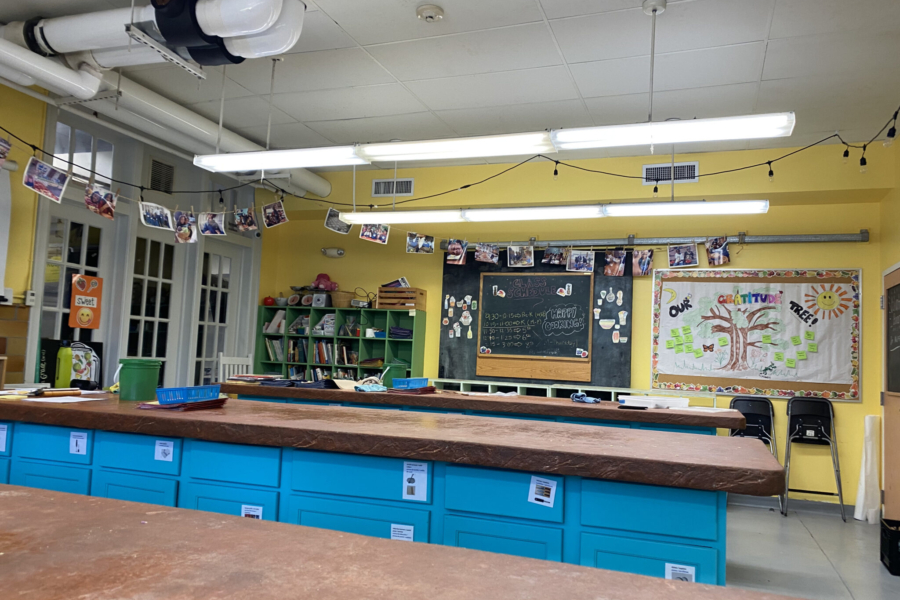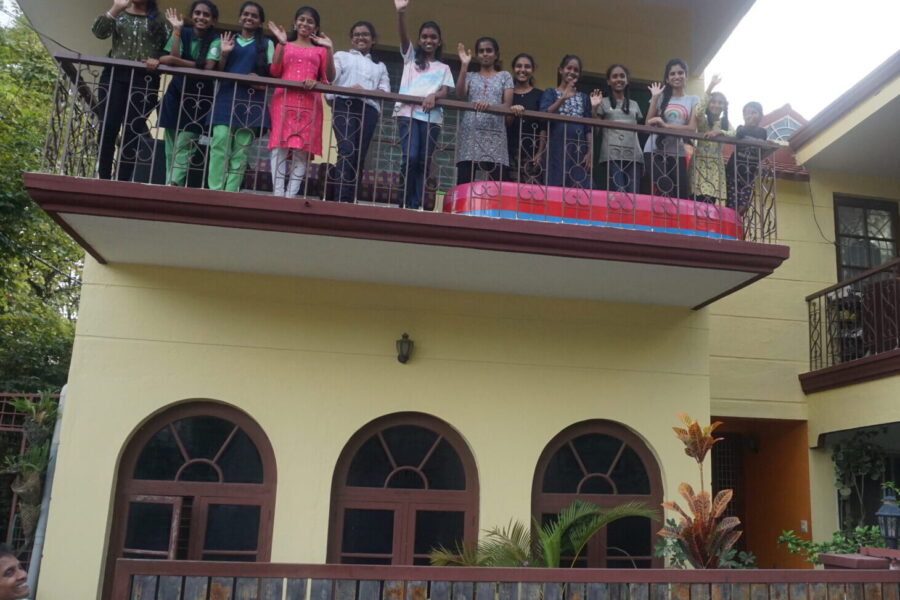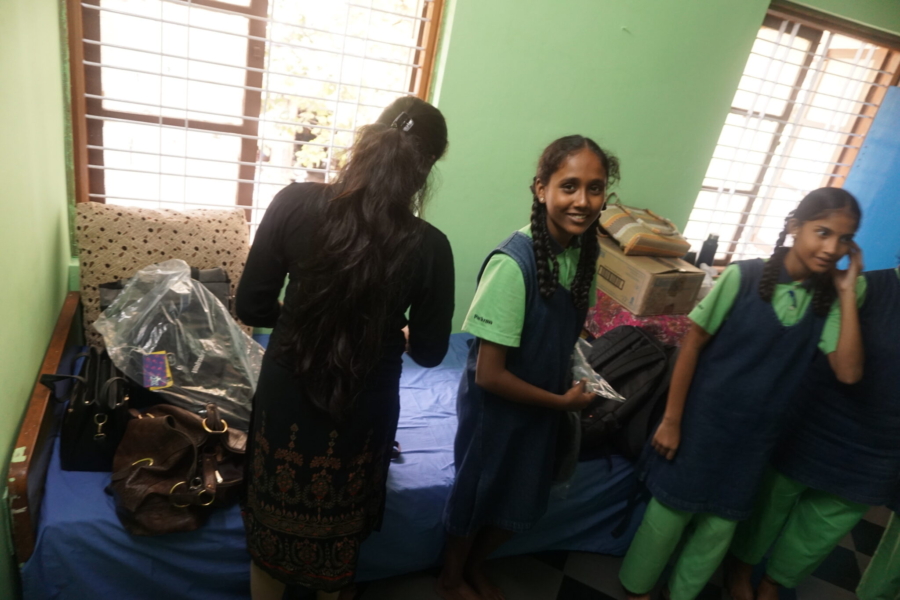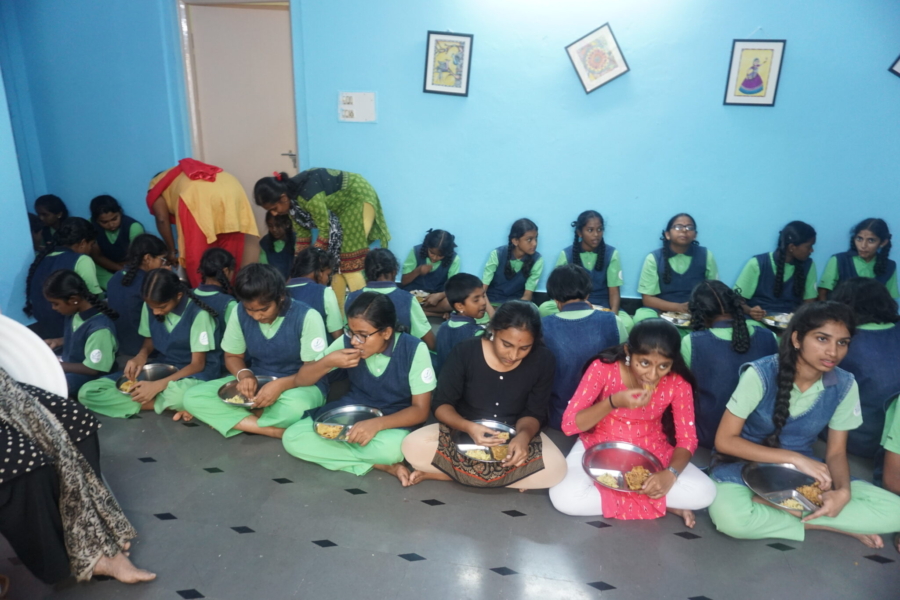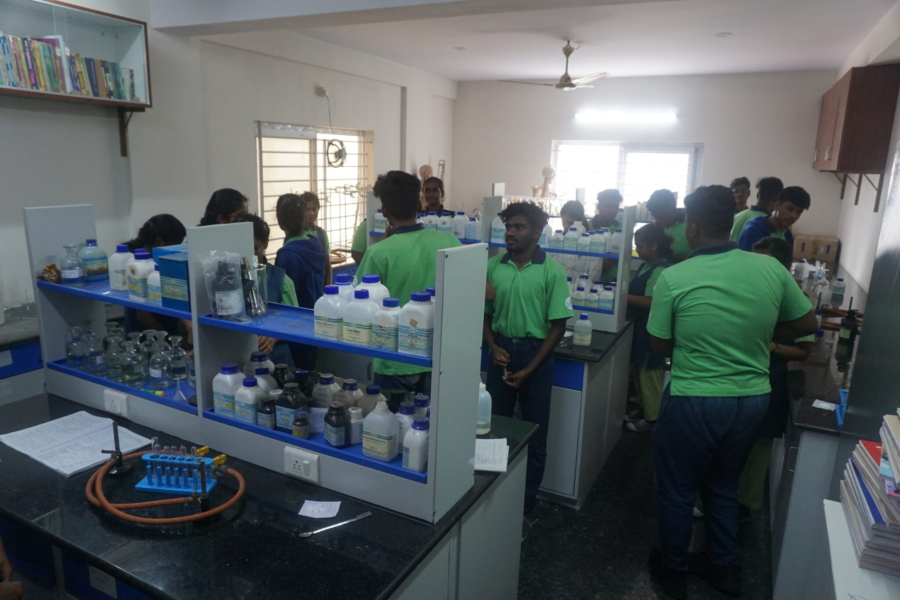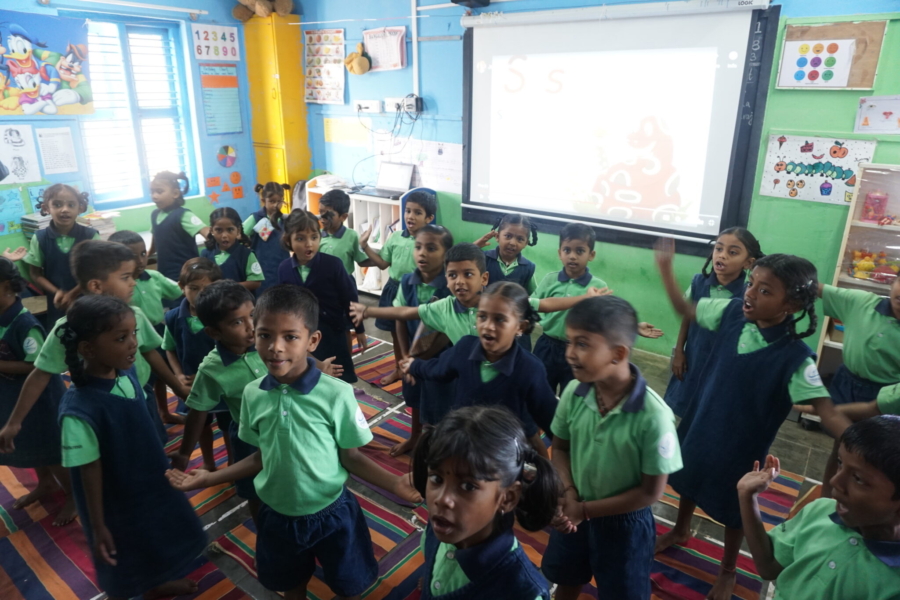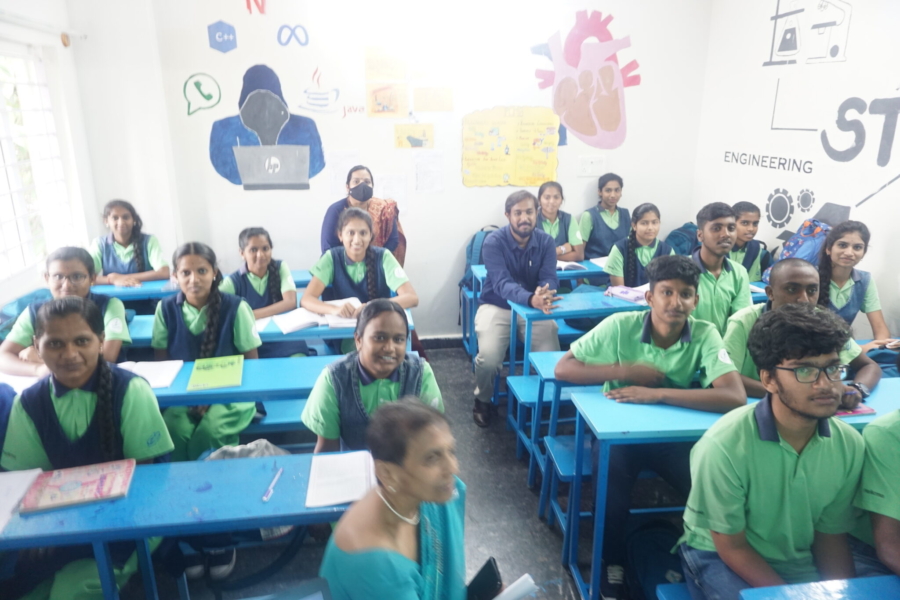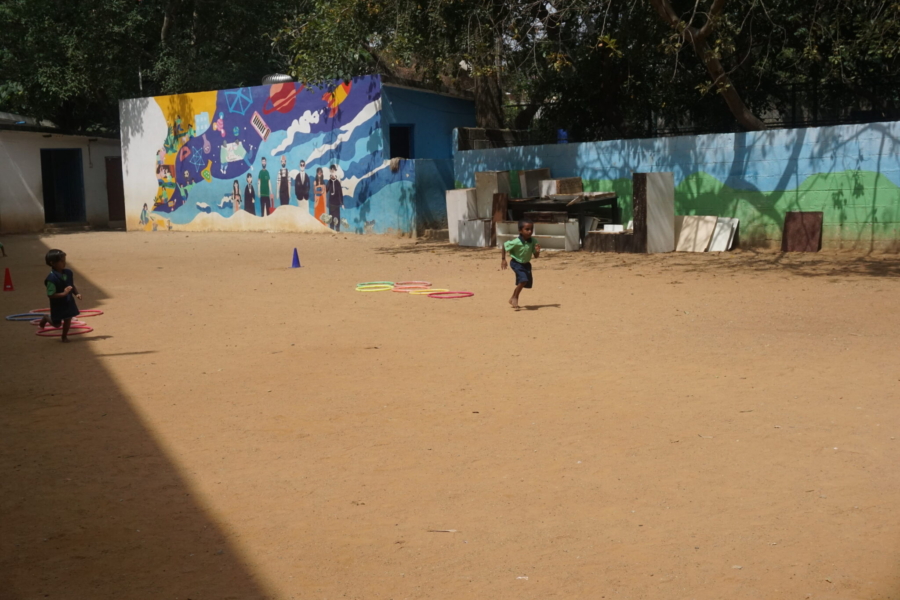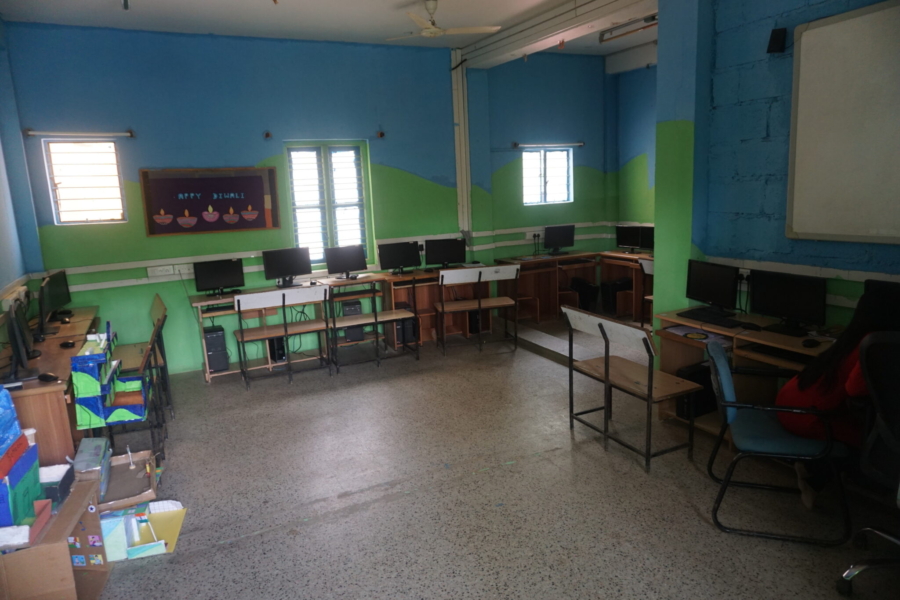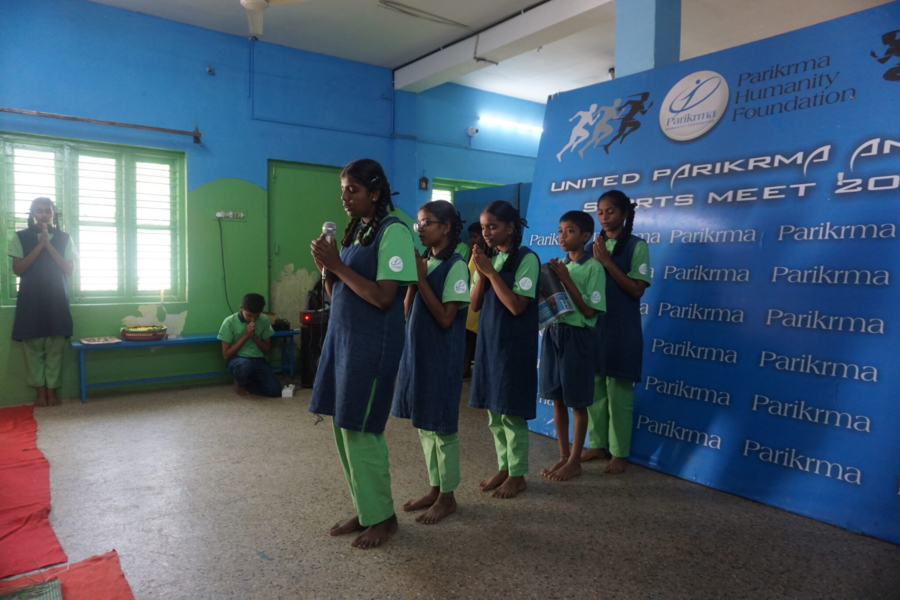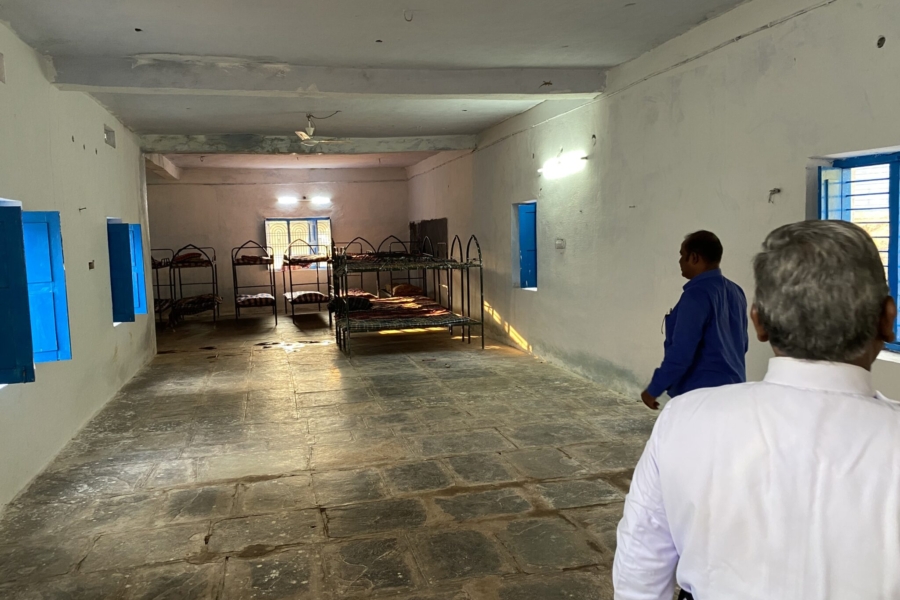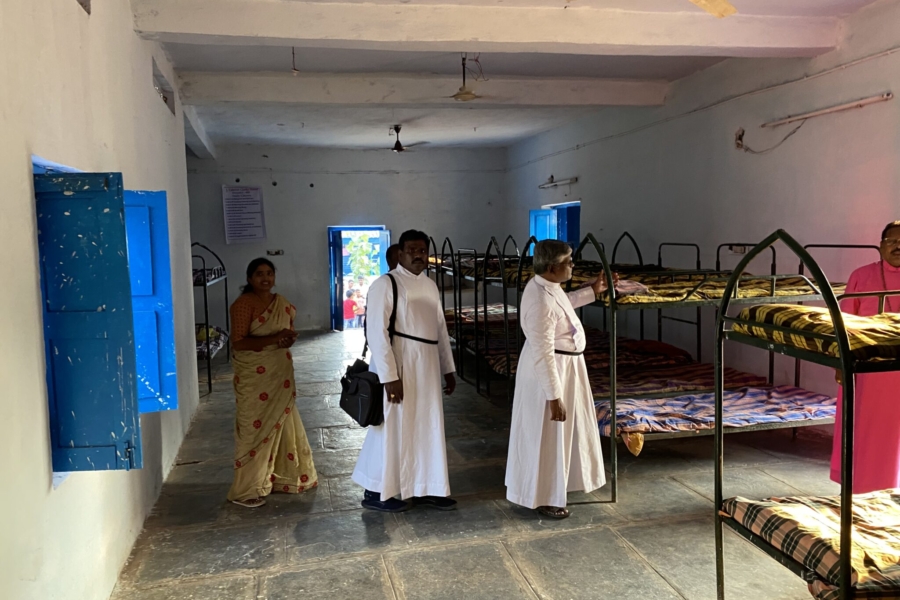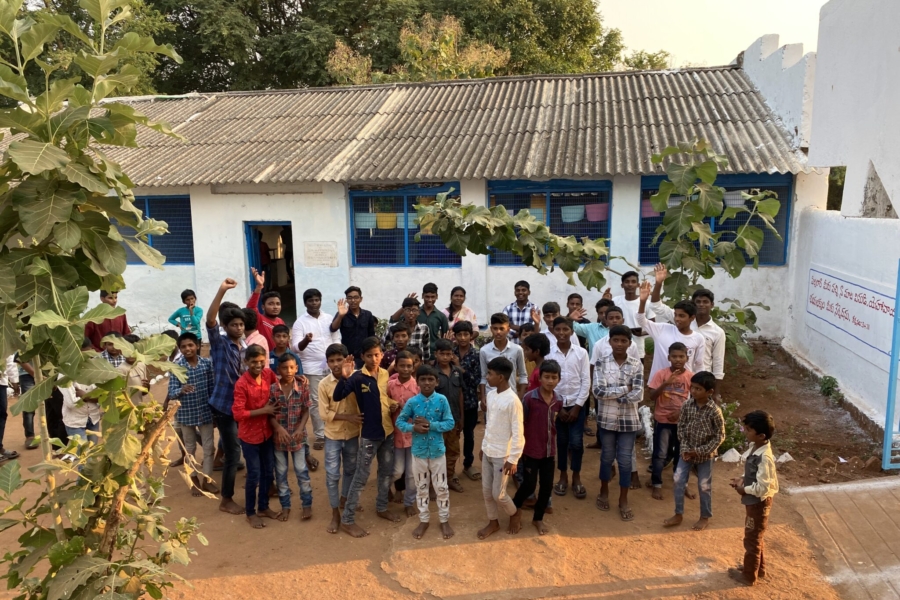After four wonderful visits to our affiliated sites in New Orleans, I couldn’t believe our trip was coming to an end as we arrived at our fifth and final school, Samuel J. Green Charter School. As we had done with all of our other visits, Maria met Shayne, Renée, Kristen, and me in front of Samuel Green before we entered.
As we made our way down the walkway, Renée noticed that the name Samuel J. Green Junior High School was carved into the building above the entrance, and commented to Shayne that it was so cool that the name of the original school was the same, even after the charter school system had been put in place so many years ago.
Our final school visit
Shayne agreed, telling us that it was unusual in New Orleans for schools to maintain their original names. It was also common for many charter schools to change their names multiple times, so this was indeed a special circumstance of Samuel Green remaining its namesake. Unlike some of the other schools we had visited as well, Samuel J. Green was not a newer school, and had some of the classic charm of an older, more established school building.
We all entered the school and checked in at the front desk, and then were greeted by our volunteer coordinator, Theressa, who escorted us to her office and resource center, where we chatted for a bit about the school and our sponsorship program.
Samuel Green is located in the Freret Corridor of New Orleans and serves students from all over the city from pre-kindergarten through 8th grade. Theressa told us she loves the Children Incorporated program and the sponsors, and it is a delight to help the kids at her school. As with our other schools, she said that affording uniforms is the biggest issue for families with kids at Samuel Green. The uniforms cost roughly $60 each for pants or a skirt and a top, and some kids only have one uniform for all 180 school days in a calendar year. With sponsorship funds, Theressa is able to help ensure students have multiple uniforms, other clothing items such as jackets and long pants for colder months, and hygiene items and school supplies.
Theressa mentioned that the school also has a weekend feeding program for students so they don’t go hungry. Renée encouraged her to apply for our Hope In Action grant program to receive additional support for the feeding program or other needs that sponsored children might have, such as bedding or mattresses for their homes.
With sponsorship funds, Theressa is able to help ensure students have multiple uniforms, other clothing items such as jackets and long pants for colder months, and hygiene items and school supplies.
An edible garden to remember
Once we finished our meeting, Theressa brought in two of our sponsored children for us to meet, and then we took a tour of the school. We visited a few classrooms, the gym and cafeteria, and the cooking classroom where a group of students had just finished making guacamole with ingredients they had grown at the school.
Then Theressa led us outside, where I was stunned to see a vast garden filled with produce that the children helped maintain, and then used the vegetables and herbs to make food in their cooking class! This edible garden project, as Theressa described, was a huge success at the school, and something they were very proud to have as it not only taught children valuable skills like gardening and cooking, but allowed them to be outside and use their hands while learning, which can offer a good break from classroom learning.
As Theressa took us back to the front of the school, it was bittersweet to say goodbye to her and then to Shayne and Maria, who had been such wonderful hosts during our few days in New Orleans. Although our trip was coming to a conclusion, I couldn’t wait to get back to the Children Incorporated office to share stories, photos, and videos with our staff and our sponsors about all the fantastic work we are doing in the Big Easy, all thanks to the generosity of amazing donors.
***
How do I sponsor a child with Children Incorporated?
You can sponsor a child in one of three ways: call our office at 1-800-538-5381 and speak with one of our staff members; email us at sponsorship@children-inc.org; or go online to our sponsorship portal, create an account, and search for a child that is available for sponsorship.

